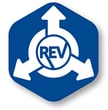Adhering to cabling standards set by those such as ANSI/TIA-568 helps provide assurance that networks will perform optimally. In real life, however, sometimes applications require creativity.
A good example of this Belden has experienced recently was the need to connect a roof-mounted fan to the network. The fan’s location on the roof was just far enough away that a telecommunications closet was going to be needed to support it.
The thought of making this infrastructure investment – not to mention the additional square footage it would require – just didn’t make financial sense. This was a low-speed, low-bandwidth application: Couldn’t we go just a little beyond the 100 m standard set forth by TIA? The short answer: Yes, we can – as long as some guidelines are followed.

Pushing the limits of a cable requires using the best possible components. Specifically, you will want to use a cable with plenty of headroom and a good signal-to-noise ratio. This will help ensure that there is little to no signal loss even with the extra distance
2. Prioritize low speed applications
Applications with low bandwidth requirements are ideal. These include security cameras, access control, LED lighting, sensors, etc. High speed applications such as video are not ideal.
3. Be wary of cable temperatures
High cable temperatures can reduce cable performance even before reaching 100 m. In order to ensure the network can reach beyond 100 m and prevent derating, design the network with temperatures in mind.
4. Use Category 6A cableCat 6A cable allows for significantly better operation and bandwidth. It is also designed to withstand high temperatures.
A Category 6A solution, Belden’s REVConnect 10GXS System supports high-density, high-bandwidth applications and can exceed 100 m channel requirements in certain applications with a maximum channel length of up to 185 m. It features insertion loss performance with 8% headroom, offering industry-leading Category 6A system guaranteed performance parameters: insertion loss, NEXT, ACRF and PSAACRF.

The REVConnect 10GXW System – another Category 6A solution – offers best-in-class noise immunity with 4 dB of PSANEXT and 10 dB of PSAACRF headroom. The system supports high-density, high-bandwidth applications and can exceed 100 m channel requirements in certain applications with a maximum channel length of up to 140 m.
Both cables are constructed to reach longer cable distances in specific situations – without any performance degradation.



.png?width=58&height=58&name=X_logo_2023_(white).png)
